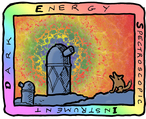| 103 | | **pass1** is the high quality, photometric coverage. To the greatest extent possible, we want to ensure pass one tiles are the best. As such, pass1 should be executed on photometric nights with good seeing (< 1.3"). The observer should not start pass1 if its a not a true photometric night or if 3-4 hour contiguous blocks are not stable and clear. The robot observing program will choose pass1 for seeing < 1.25", transparency > 90% and sky brightness not worse than 0.25 mag brighter than the fiducial. But the observer should really be setting pass1 based on whether its a very stable photometric night from beginning to end. Forcing the pass is described here: MosBot. |
| 104 | | |
| 105 | | **pass2** is the next best pass. Seeing should be < 1.3" or the weather is photometric (but seeing worse than 1.3"). Pass2 and 3 may alternate through out a given night and the mosbot observing robot will do this automatically based on seeing, transparency (above or below 90%), and sky brightness (above or below the fiducial 18.45 mag/sq arcsec). Pass2 could also be done if no pass1 tiles are available. |
| | 103 | **pass1** is the high quality, photometric coverage. To the greatest extent possible, we want to ensure pass one tiles are the best. As such, pass1 should be executed on photometric nights with good seeing (< 1.3"). The observer should not start pass1 if its a not a true photometric night or if 3-4 hour contiguous blocks are not stable and clear. The robot observing program will choose pass1 for seeing < 1.25", transparency > 90% and sky brightness not worse than 0.25 mag brighter than the fiducial. But the observer should really be setting pass1 based on whether its a very stable photometric night from beginning to end. Forcing the pass is described here: [wiki: MosBot]. |
| | 104 | |
| | 105 | **pass2** is the next best pass. Seeing should be < 1.3" or the weather is photometric (but seeing worse than 1.3"). Pass2 and 3 may alternate through out a given night and the mosbot observing robot will do this automatically based on seeing, transparency (above or below 90%), and sky brightness (above or below the fiducial 18.45 mag/sq arcsec). Pass2 could also be done if no pass1 tiles are available. The robot will stick with pass2 when conditions are a little worse than this. Specifically seeing < 2" and trans > 70%. |
